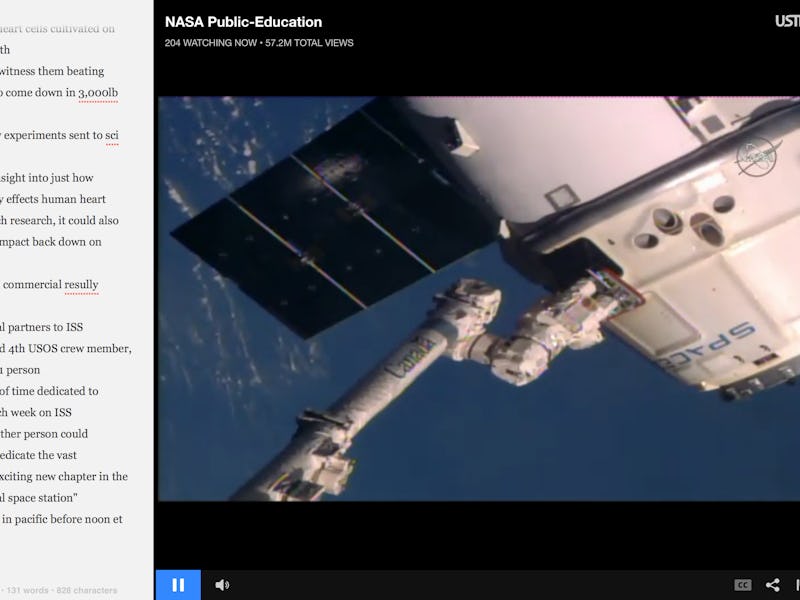SpaceX’s Dragon spacecraft detached from the International Space Station (ISS) on Friday, having successfully delivered nearly 5,000 pounds worth of supplies. Among the cargo was an international docking adapter (IDA), a new part that signals the birth of a new chapter in the ISS’s history.
SpaceX’s ninth commercial resupply mission launched off from Florida’s Cape Canaveral Air Force Station on July 18, carrying a DNA sequencer to test whether analysis could be undertaken in space.
Perhaps most important was the IDA the Dragon delivered and attached during a spacewalk on August 19. The IDA enables private companies like SpaceX and Boeing to visit the ISS on manned missions without governmental assistance. Boeing has already announced it plans to send its first Starliner flight to the ISS in 2018.
This was actually SpaceX and NASA’s second try at attaching the IDA. The first disintegrated on a failed mission in June 2015. It won’t just be commercial flights that use the new dock: all missions will henceforth use the new dock, including NASA’s Orion mission, scheduled to send humans on a manned mission to Mars by 2023.
Scientists aboard the ISS also experimented on human cells, transforming a blood cell into a stem cell, before turning it into a heart cell to study the effects of microgravity on the heart. The resultant cells are being transported as part of the Dragon’s 3,000 pound cargo load on its return mission.
The Dragon will now land in the Pacific Ocean, approximately 326 miles south- west of Baja California, around noon ET.
